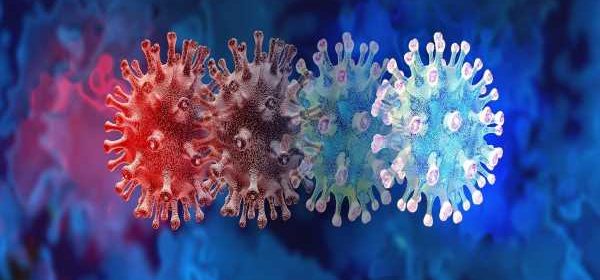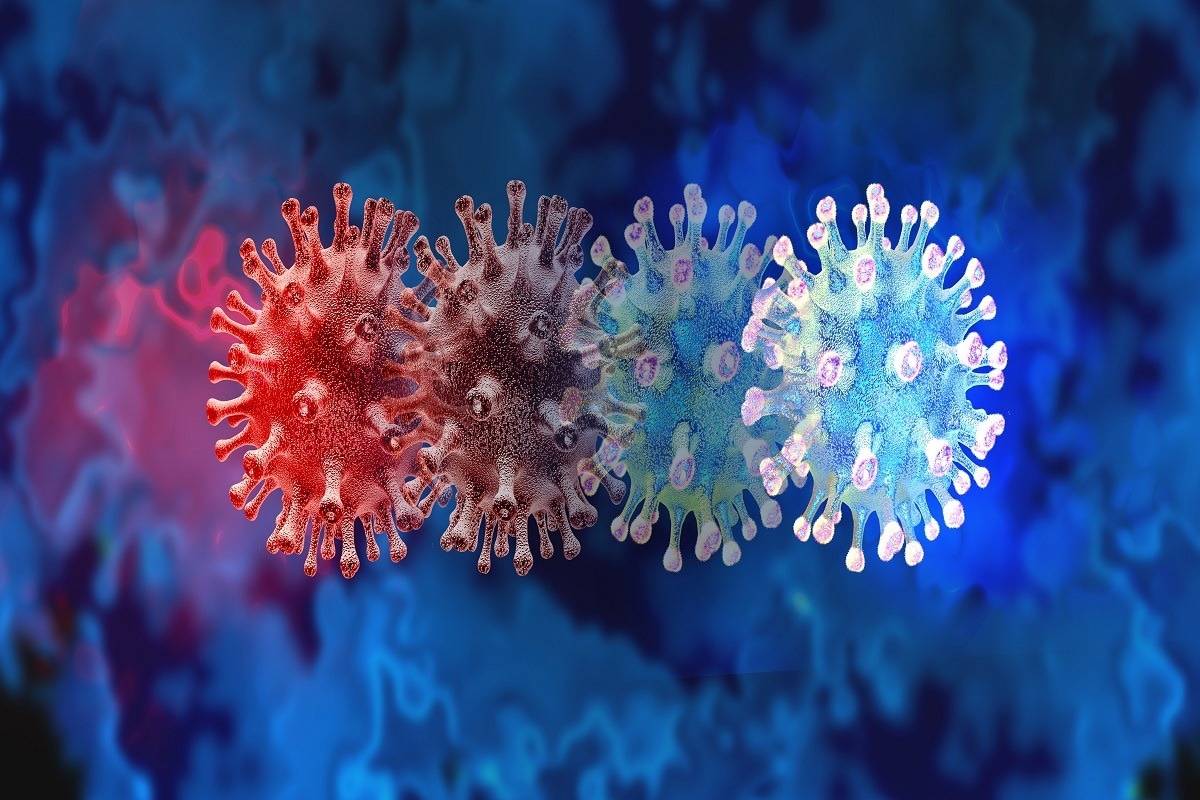Study highlights the urgent need for combinatorial drug therapies for SARS-CoV-2

In a recent study posted to the bioRxiv* pre-print server, researchers investigated the susceptibility of naturally-occurring severe acute respiratory syndrome coronavirus 2 (SARS-CoV-2) main protease (Mpro) variants to protease inhibitor drugs, including nirmatrelvir and ensitrelvir.

The researchers also analyzed the drug resistance phenotypes of the amino acid (AA) changes at a single position in global SARS-CoV-2 sequences retrieved from the global initiative on sharing avian flu data (GISAID) database. Furthermore, they extended the study analyses to include nine naturally variable AA residues localized within the two regions adjacent to the Mpro active site.
Background
Nirmatrelvir is the active component of oral SARS-CoV-2 antiviral marketed as Paxlovid. Phylogenetic studies have shown that nirmatrelvir-resistant SARS-CoV-2 variants have pre-existed in the human population and exhibit capability to spread. Similarly, there could be ensitrelvir-resistant variants, another emergency use authorized (EUA) SARS-CoV-2 antiviral.
Biochemical and structural studies in the past two decades accumulated a wealth of knowledge about coronaviruses (CoV) proteases. In these studies, CoV Mpro emerged as a strong candidate for drug development in response to the 2002 SARS pandemic and the coronavirus disease 2019 (COVID-19) pandemic in 2020. While Paxlovid has proven to be highly effective in diminishing COVID-19 pathogenesis, the long-term consequences of its widespread prescription, especially drug resistance, are unknown. Given the varying potency of nirmatrelvir and ensitrelvir against CoV species, SARS-CoV-2's rapid evolution to several variants of concern (VOCs) is also concerning.
About the study
In the present study, researchers developed a cell-based gain-of-signal assay to evaluate SARS-CoV-2 Mpro function. This assay worked on the principle that wildtype (WT) protease activity suppresses luminescent signal and genetic/chemical inhibition results in signal increases directly proportional to inhibitor efficacy or mutant severity.
The assay results showed that a single AA change (P168S) in the active site adjacent to the Mpro loop determined SARS-CoV-2's susceptibility to protease inhibitor drugs. Further, high-resolution structural studies revealed that P168 was close to the binding sites of nirmatrelvir and ensitrelvir, at 3.3Å and 8.8Å, respectively.
This striking example of differential drug responsiveness inspired the researchers to examine natural changes at position 168 and nine other naturally occurring variants in the vicinity of the Mpro active site. First, they focused on AA residues 165, 169, 171, and 173 within the P168 beta-hairpin. In addition, they investigated the Mpro helical region encompassing AA residues 45-49.
Study findings
The study findings revealed distinct resistance profiles for nirmatrelvir and ensitrelvir. For instance, A173V conferred selective resistance to nirmatrelvir, whereas the T45I, D48Y, and M49I AA substitutions in the helix adjacent to the Mpro active site provided increased resistance to ensitrelvir. In fact, A173 emerged as a drug resistance hotspot by causing an 11.6-fold increase in resistance to nirmatrelvir.
Previous studies with hepatitis C virus (HCV) have shown that single AA mutations elicit selective drug resistance of varying magnitude towards different protease inhibitors while minimally impacting viral fitness. Conversely, resistance to human immunodeficiency virus (HIV) protease inhibitors typically requires two or more mutations. Perhaps the naturally occurring SARS-CoV-2 Mpro variants are merely a permissive environment to select secondary mutations that provide complete drug resistance.
More importantly, the study analysis highlighted that most single-variant allele frequencies might already be high but arise from a single nucleotide mutation. Thus, the emergence of double SARS-CoV-2 Mpro mutants is inevitable. ∆P168 and A173V single AA mutations conferred resistance to nirmatrelvir in a near synergistic manner, i.e., 51-fold vs. five- and 11-fold, respectively, for every single mutant. An orthologous vesicular stomatitis virus (VSV)-based assay fetched similar results for this double mutant. These findings indicated that combining two naturally occurring AA changes could help attain strong resistance to nirmatrelvir.
Conclusions
Overall, the study highlighted the need to focus on developing COVID-19 therapies that combine different drugs simultaneously targeting multiple SARS-CoV-2 processes to minimize the development of drug-resistant mutants. Fortunately, studies have not yet reported that circulating SARS-CoV-2 variants are manifesting combinations of the protease-resistant mutations described in the current study.
Furthermore, the authors cautioned against using protease inhibitor drugs as monotherapies for COVID-19 treatment and encouraged the development of more protease inhibiting and other antiviral drugs with different resistance profiles. Future studies should investigate precise mechanisms of action of AA substitutions that confer drug resistance. Additionally, studies should manually examine full genome sequences of Mpro variants that appear at highly conserved AA positions.
*Important notice
bioRxiv publishes preliminary scientific reports that are not peer-reviewed and, therefore, should not be regarded as conclusive, guide clinical practice/health-related behavior, or treated as established information.
- Transmissible SARS-CoV-2 variants with resistance to clinical protease inhibitors, Seyed Arad Moghadasi, Emmanuel Heilmann, Sofia N Moraes, Fiona L. Kearns, Dorothee von Laer, Rommie E Amaro, Reuben Harris. (2022). bioRxiv. doi: https://doi.org/10.1101/2022.08.07.503099 https://www.biorxiv.org/content/10.1101/2022.08.07.503099v1
Posted in: Medical Science News | Medical Research News | Disease/Infection News
Tags: Allele, Amino Acid, Assay, Cell, Coronavirus, Coronavirus Disease COVID-19, covid-19, Drugs, Efficacy, Evolution, Flu, Genetic, Genome, Helix, Hepatitis, Hepatitis C, HIV, Immunodeficiency, Mutation, Nucleotide, Pandemic, Respiratory, SARS, SARS-CoV-2, Severe Acute Respiratory, Severe Acute Respiratory Syndrome, Stomatitis, Syndrome, Virus

Written by
Neha Mathur
Neha is a digital marketing professional based in Gurugram, India. She has a Master’s degree from the University of Rajasthan with a specialization in Biotechnology in 2008. She has experience in pre-clinical research as part of her research project in The Department of Toxicology at the prestigious Central Drug Research Institute (CDRI), Lucknow, India. She also holds a certification in C++ programming.
Source: Read Full Article